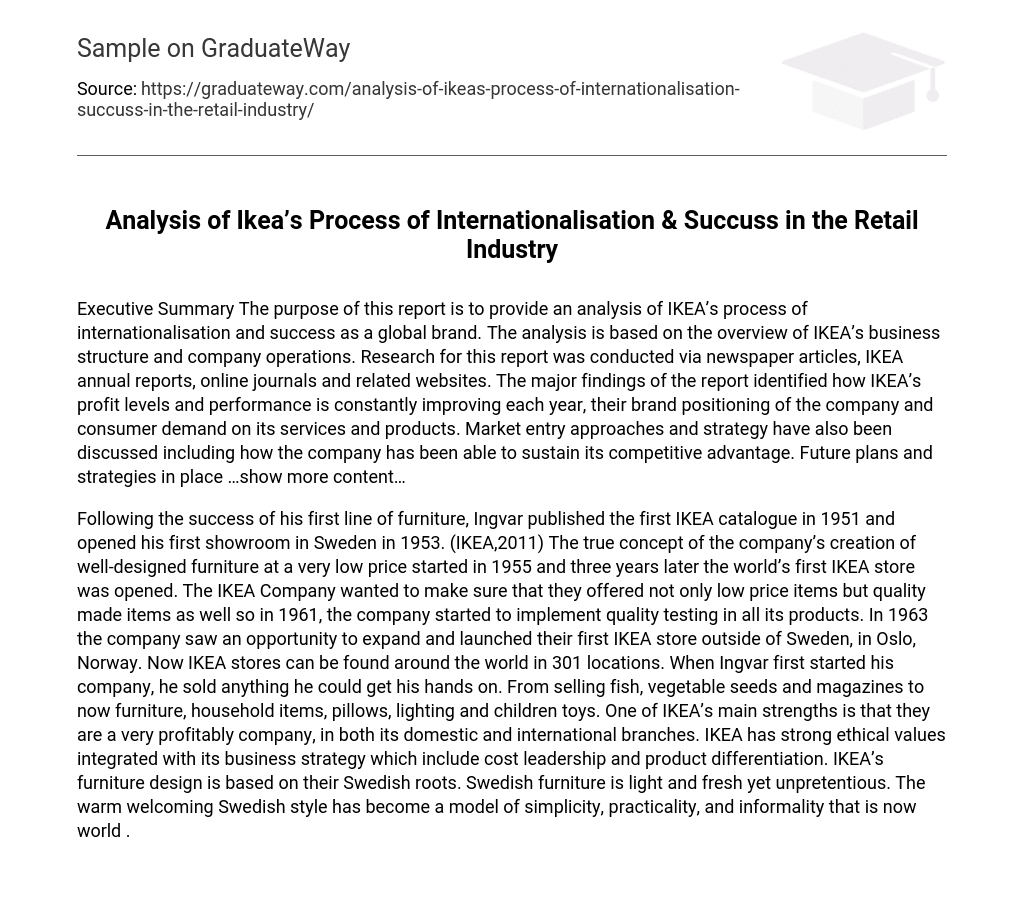This report aims to analyze the global expansion of IKEA and its success as a global brand. The analysis is based on an evaluation of IKEA’s corporate structure and operations. The investigation for this report utilized newspaper articles, annual reports from IKEA, online journals, and related websites. Key findings highlight the consistent growth in IKEA’s profits and performance each year, its market positioning, and customer demand for its products. Additionally, the report delves into approaches and tactics for entering new markets while maintaining a competitive advantage. Future plans and strategies are also addressed.
Ingvar published the first IKEA catalogue in 1951 and opened his first showroom in Sweden in 1953. The concept of creating well-designed furniture at a low price began in 1955 and the first IKEA store opened three years later. In 1961, quality testing was implemented for all products to ensure both low price and quality. In 1963, the first IKEA store outside of Sweden was launched in Oslo, Norway. Today, there are 301 IKEA stores worldwide. Initially, Ingvar sold various items including fish, vegetable seeds, magazines, and now furniture, household items, pillows, lighting, and children’s toys. One of IKEA’s strengths is its profitability in both domestic and international branches. The company’s business strategy is integrated with strong ethical values focused on cost leadership and product differentiation. Swedish furniture design, known for its lightness and informality, is influenced by IKEA’s Swedish roots and has become a model of simplicity and practicality worldwide.





